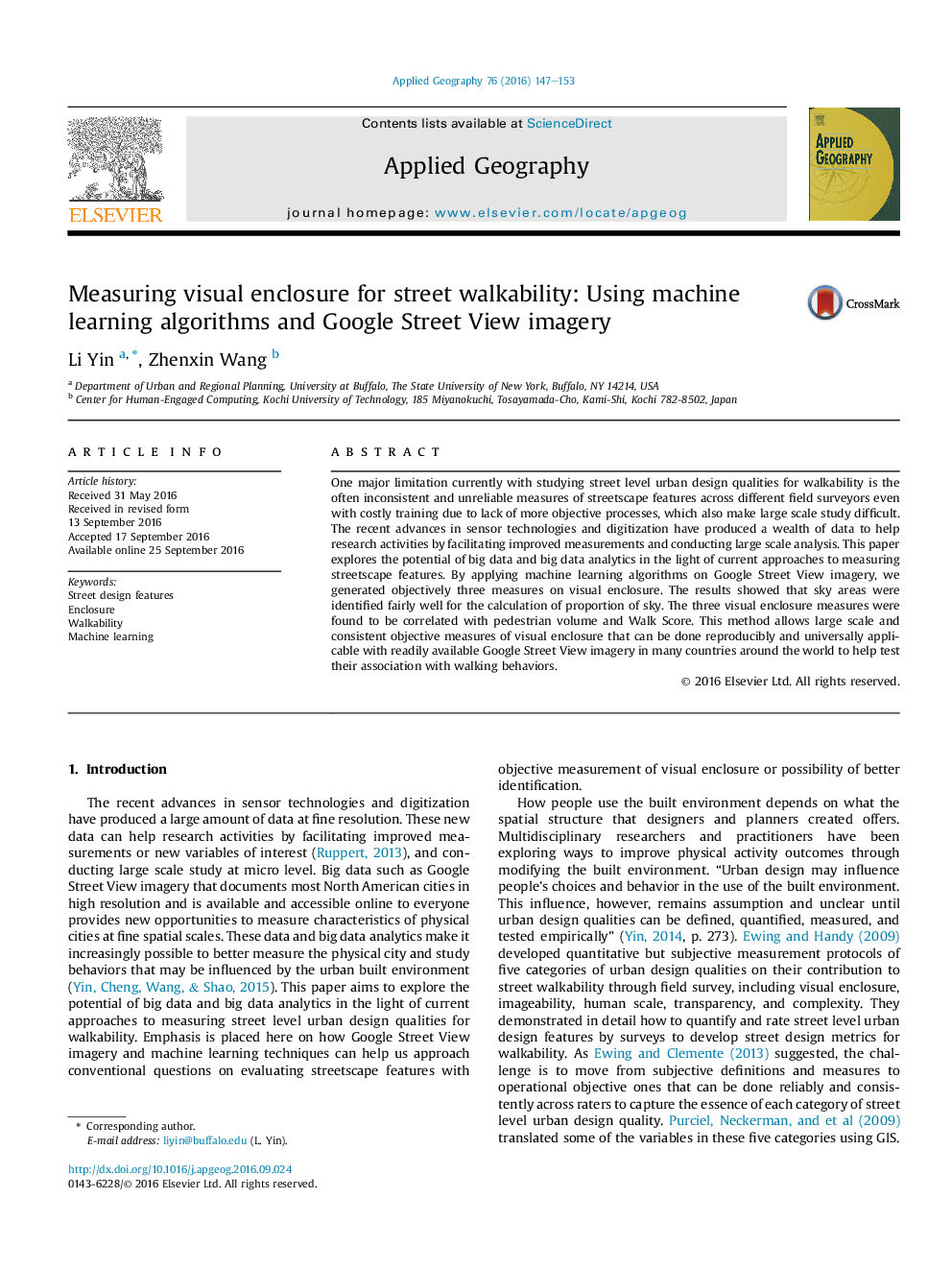| Article ID | Journal | Published Year | Pages | File Type |
|---|---|---|---|---|
| 6458546 | Applied Geography | 2016 | 7 Pages |
â¢We generated objective visual enclosure variables applying machine learning algorithms on Google Street View imagery.â¢The results showed that the proportion of sky ahead the street is strongly associated with the sky proportions across the street.â¢The visual enclosure variables are significantly associated with observed pedestrian counts and Walk Score negatively.â¢This method allows large scale and consistent objective measures of visual enclosure.
One major limitation currently with studying street level urban design qualities for walkability is the often inconsistent and unreliable measures of streetscape features across different field surveyors even with costly training due to lack of more objective processes, which also make large scale study difficult. The recent advances in sensor technologies and digitization have produced a wealth of data to help research activities by facilitating improved measurements and conducting large scale analysis. This paper explores the potential of big data and big data analytics in the light of current approaches to measuring streetscape features. By applying machine learning algorithms on Google Street View imagery, we generated objectively three measures on visual enclosure. The results showed that sky areas were identified fairly well for the calculation of proportion of sky. The three visual enclosure measures were found to be correlated with pedestrian volume and Walk Score. This method allows large scale and consistent objective measures of visual enclosure that can be done reproducibly and universally applicable with readily available Google Street View imagery in many countries around the world to help test their association with walking behaviors.
